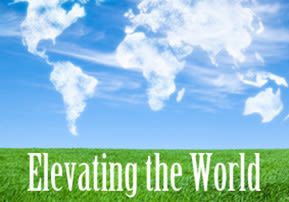
Vayikra: Elevating the World
The practice of ritual sacrifices are difficult to understand. How are we supposed to relate to this form of worship which seems so foreign to our world?

In the last five weekly readings in Exodus, there is an extensive description of the construction of the Tabernacle. Starting this week and extending for the next few weeks we will be reading about the actual functioning of the Sanctuary. The main activity of this beautiful edifice was the offerings brought there. Our discussion won’t be focused on the details of the different sacrifices but on the general idea and meaning behind this practice. I want to be honest that as a Western Jew, raised in the 20th and 21st centuries, these practices are difficult to understand. How are we supposed to relate to this form of worship which seems so foreign to our world? The commentators offer numerous approaches to these issues but I would humbly like to share some of my own thoughts on the meaning of the Temple and its sacrifices.
In the Ethics of the Fathers we are taught that the world stands on three things: Torah, service to Hashem, and bestowing kind acts. The commentators explain that service refers primarily to the sacrifices brought in the Temple. Since we don’t have the Temple today, we substitute this activity with prayer. Why does the world “stand” on these three things? Also, how does prayer relate to sacrifices that it became a substitute for sacrifices?
There are three basic components to a person: intellectual, emotional, and physical. These correspond to the  head, the heart, and the body. Each one of these has an expression and use that brings out its unique qualities. Torah is primarily an intellectual activity which challenges the mind and gives us greater clarity and understanding of Hashem and His world. Conversely, bestowing kind acts is the physical expression of our involvement with others in this world. What good would all of our Torah be if we didn’t carry through and live a life of good deeds and kindness? But as the Talmud says “Hashem wants our heart”. The world of the Temple and, later of prayer, are the highest expressions of our emotional world. What happens in the Sanctuary that is so intrinsic to the fullest expression of our heart?
head, the heart, and the body. Each one of these has an expression and use that brings out its unique qualities. Torah is primarily an intellectual activity which challenges the mind and gives us greater clarity and understanding of Hashem and His world. Conversely, bestowing kind acts is the physical expression of our involvement with others in this world. What good would all of our Torah be if we didn’t carry through and live a life of good deeds and kindness? But as the Talmud says “Hashem wants our heart”. The world of the Temple and, later of prayer, are the highest expressions of our emotional world. What happens in the Sanctuary that is so intrinsic to the fullest expression of our heart?
The emotional world of a person is a swinging door which sometimes favors and is drawn towards the world of truth, of the soul, while other times it is pulled downward towards the physical. How we balance these two poles will determine our emotional and spiritual well-being.
There are two basic challenges that the emotional world has when dealing with this world. One we could call “too much” and the other “too little”. The first, “too much” is when one gets overly involved in the world’s illusory pleasures and loses a sense of spiritual dignity. “Too little” is when we feel overwhelmed with the task of using this world in a healthy, balanced way to elevate ourselves and connect to Hashem. In either situation we can enter an almost dream-like state.
In the world of “too much” we live with fantasies and illusions of delights to be accrued in this world. By definition, the fulfillment of these “pipe dreams” is real only in our minds. On the other hand, when a person lives in the world of “too little” he retreats to a world of fear and despair, feeling that his ability to elevate the world is basically impossible.
Hashem provides us with an antidote to these two unhealthy emotional poles. When a Jew would bring an offering he would feel and experience the transient nature of the world. He would lean on the animal as if the animal was an extension of himself. He then witnessed it being slaughtered. He realized that this world, with all its beauty, is temporary and only has value in a higher context. And that higher context was the world of the Sanctuary, and, on a parallel level, a world which we create all around us that can be filled with sanctity and holiness. This helps for those “too much” times of life.
But he also saw the blood, the life force of the animal, being brought onto the altar. He witnessed that even the most physical force in the animal, the blood, as well as the pieces of the animal, was and could be brought to the altar of dedication to Hashem. Of course, the animal (and the animal within us) is very physical but it can be elevated in the service of Hashem.
Both of these lessons were expressed through the offerings. This wasn’t an intellectual exercise of refocusing his emotional world, but a real life experience as he watched the animal be slaughtered (for the “too much” people) and brought to the altar (for the “too little” people). It was an intense, very real experience to shock him out of his world of imagination to reconnect to the real world, his real world.
Today, we don’t have the Temple or the sacrifices but we still have the incredible opportunity of prayer to help us realign our emotional world. Although the experience is not as intense as the worship in the Sanctuary, even so, standing before Hashem is an incredible opportunity to internalize the two extremes of the emotional world.
With Hashem’s help we won’t get lost to the allures of this world and we can also realize that this world can be elevated fully in the service of Hashem. The more we reach this balance the richer and more inspiring our lives will become.
* * *
Rabbi Dovid Charlop is on the teaching staff of the Neve Tzion Yeshiva in Telzstone, Israel.











Tell us what you think!
Thank you for your comment!
It will be published after approval by the Editor.